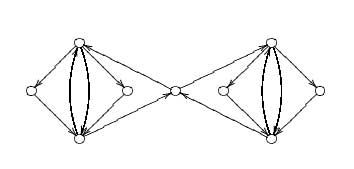Here’s a part of yesterday’s post by bitch ph.d. :
But first of all I have to figure out what the hell I’m going to teach my graduate students this semester, and really more to the point, what I am not going to bother to try to cram into this class just because it’s my first graduate class and I’m feeling like teaching everything I know in one semester is a realistic and desireable possibility. Yes! Here it all is! Everything I have ever learned! Thank you, and goodnight!
Ah, the perpetual motion machine of last-minute course planning, driven by ambition and sloth!.
I’ve had similar experiences, even with undergraduate courses (in Belgium there is no fixed curriculum so the person teaching the course is responsible for its contents). If you compare the stuff I hoped to teach when I started out with the courses I’ll be giving in a few weeks, you would be more than disappointed.
The first time I taught _differential geometry 1_ (a third year course) I did include in the syllabus everything needed to culminate in an outline of Donaldson’s result on exotic structures on $\mathbb{R}^4 $ and Connes’ non-commutative GUT-model (If you want to have a good laugh, here is the set of notes). As far as I remember I got as far as classifying compact surfaces!
A similar story for the _Lie theory_ course. Until last year this was sort of an introduction to geometric invariant theory : quotient variety of conjugacy classes of matrices, moduli space of linear dynamical systems, Hilbert schemes and the classification of $GL_n $-representations (again, smile! here is the set of notes).
Compared to these (over)ambitious courses, next year’s courses are lazy sunday-afternoon walks! What made me change my mind? I learned the hard way something already known to the ancient Greeks : mathematics does not allow short-cuts, you cannot expect students to run before they can walk. Giving an over-ambitious course doesn’t offer the students a quicker road to research, but it may result in a burn-out before they get even started!
